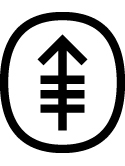Molecular analysis of HLA-B35 alleles and their relationship to HLA-B15 alleles Journal Article
| Authors: | Cereb, N.; Kim, C.; Hughes, A. L.; Yang, S. Y. |
| Article Title: | Molecular analysis of HLA-B35 alleles and their relationship to HLA-B15 alleles |
| Abstract: | The HLA-B35 serotype is one of the largest allelic groups of HLA class I molecules and includes four isotypes. Of the four, the B35 variant isoform is relatively rare and is the most acidic form. DNA sequencing of the rare isoforms revealed three alleles, B(*)1522, B(*)3511, and B(*)3517. A phylogenetic tree of HLA-B15- and HLA-B35-related alleles for the exon 2 and 3 nucleotide sequences showed that exon 2 of B(*)1522 clusters with B35 alleles whereas exon 3 clusters with B15 alleles. Branches of the tree suggest that the serodeterminants of B35, B62, B63, and B70 may reside in the α1 domain, encoded by exon 2. The B(*)1520 and B(*)1522 genes, which type as B62 and B35, respectively, are hybrid molecules alternatively using exon 2 and exon 3 sequences of B(*)3501 and B(*)1501. A comparison of intron 2 sequences for B(*)3501, B(*)1501 and B(*)1522 suggests that the recombination site may have been in the region at the 3' end of intron 2. Despite being flanked by two highly polymorphic exons (exons 2 and 3), intron 2 is relatively well conserved in the B-locus, and it is characterized by seven to eight tandem repeats of the CGGGG pentanucleotide. A high degree of sequence homology and repetitive sequences are essential for a significant frequency of recombination. In this report, we reveal more about the complex evolutionary history of the HLA-B alleles. |
| Keywords: | human cell; major clinical study; molecular genetics; allele; gene amplification; gene locus; intron; alleles; evolution; evolution, molecular; genetic recombination; amino acid sequence; molecular sequence data; sequence alignment; nucleotide sequence; hla antigen class 1; hla b35 antigen; hla-b35 antigen; base sequence; dna sequence; sequence homology; hla b antigen; hla-b antigens; biogenesis; genetic polymorphism; sequence analysis, dna; phylogeny; tandem repeat; serotype; humans; human; priority journal; article; hla class i; recombinant alleles; recombination hot spots |
| Journal Title: | Tissue Antigens |
| Volume: | 49 |
| Issue: | 4 |
| ISSN: | 0001-2815 |
| Publisher: | Wiley-Blackwell Publishing, Inc. |
| Date Published: | 1997-04-01 |
| Start Page: | 389 |
| End Page: | 396 |
| Language: | English |
| PUBMED: | 9151391 |
| PROVIDER: | scopus |
| DOI: | 10.1111/j.1399-0039.1997.tb02767.x |
| DOI/URL: | |
| Notes: | Article -- Export Date: 17 March 2017 -- Source: Scopus |
Altmetric
Citation Impact
BMJ Impact Analytics
Related MSK Work




